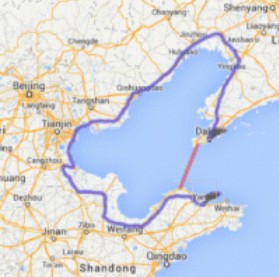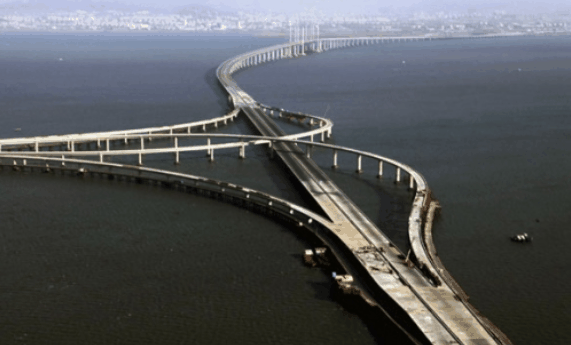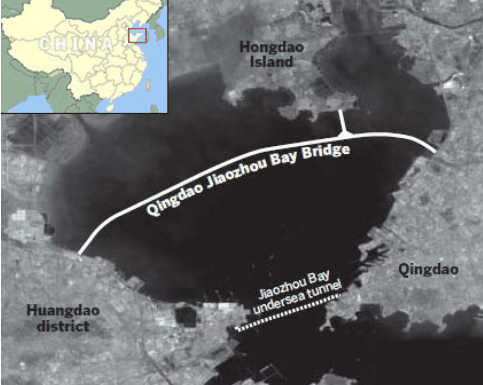
China’s “field of dreams”, “build it and they will come”, approach to construction shows no signs of slowing.
In 2011, China opened the the world’s longest sea bridge and an underground tunnel in Quingdao (pictured below).

The bridge stretches 42.4 kilometres and links historic Qingdao with the city’s industrial zone Huangdao. The 9.47 kilometre tunnel also links these two cities, but at a different location (see below map).

At the time of its opening, the efficacy of the project was called into doubt by a range of commentators, who questioned: the logic of building both a tunnel and bridge simultaneously; why the bridge was built at the widest part of the bay; and why they were built when they only provide a 10 minute improvement in travel time? Concerns were also raised over the seeming lack of cost-benefit analysis attached to the project.
In a similar vein, last year China opened the world’s biggest building: a 19 million square foot (1.77 million square metre) complex with a village, shopping centres, hotels, a water park, and even its own artificial sun underneath its 100 metre high ceiling. Like the bridge and tunnel above, the building appears to have been built without regard to actual demand, with retail vacancies across China already high and increasing further still amid the rapid construction.
Now China plans to add the world’s longest, most expensive, and arguably most dangerous underwater tunnel to its list: a $US26 billion 76 mile (123km) long submarine tunnel linking the northern ports of Dalian and Yantai. From The Diplomat:
The 123-kilometer tunnel would connect the port cities of Dalian in Liaoning Province and Yantai in Shandong Province with a rail line, knocking off 800 miles and cutting the travel time between the two places from eight hours to 40 minutes. Authorities hope that the plan will stimulate economic growth by connecting the north with the wealthy eastern coast…
Some have expressed concerns over safety since the proposed tunnel would run across two earthquake fault lines. In 1976 a 7.5 magnitude earthquake hit the industrial city of Tangshan in Hebei province, which lies between Shandong and Liaoning. The official death toll was 242,000, but some estimates outside of China are as high as 655,000…
The final decision of whether the tunnel will be built or not lies with the State Council, which will examine the blueprints in April.
The sheer length and depth of the tunnel, combined with the fact that it would be built on an earthquake zone (requiring it to withstand 8.0 magnitude earthquakes) suggests the project is overly ambitious and, if approved, could be another sign of malinvestment.

